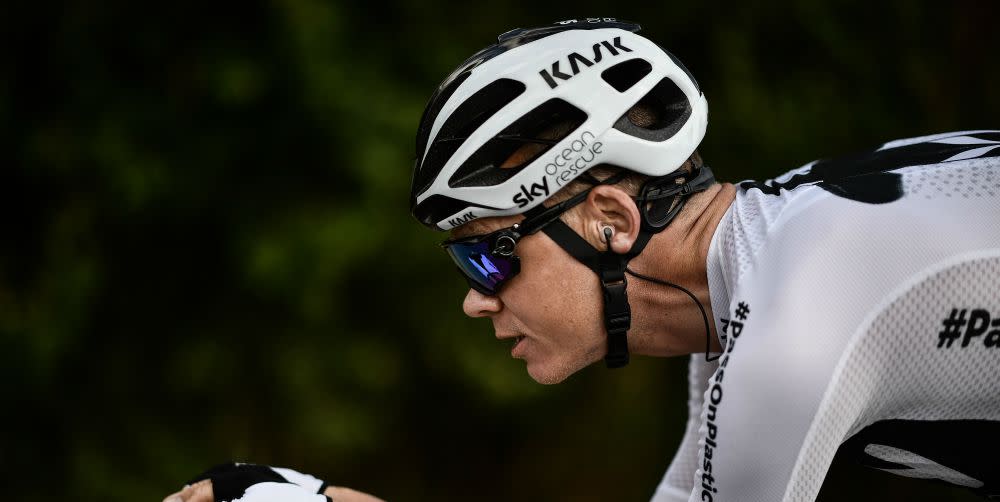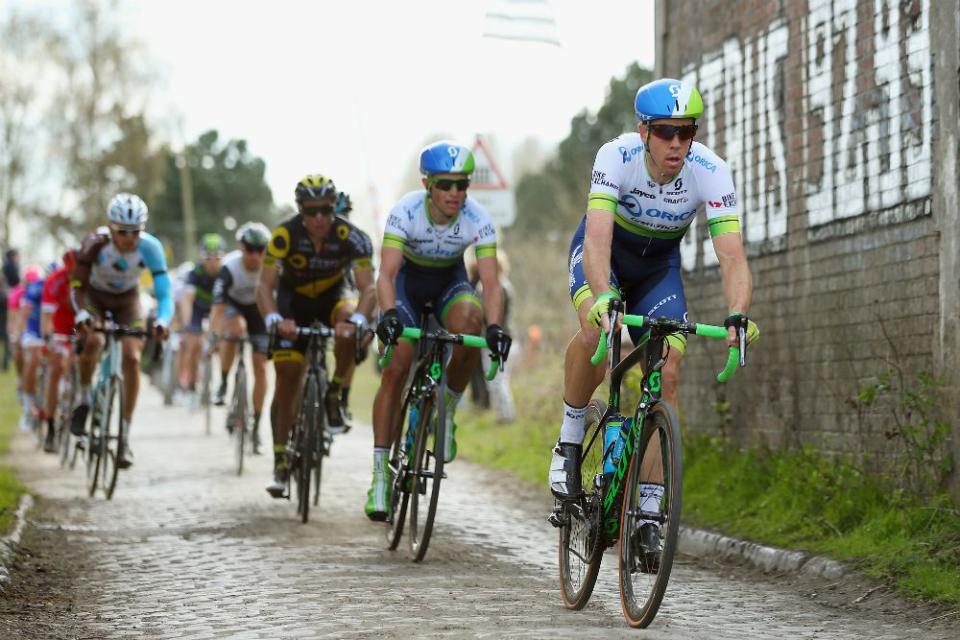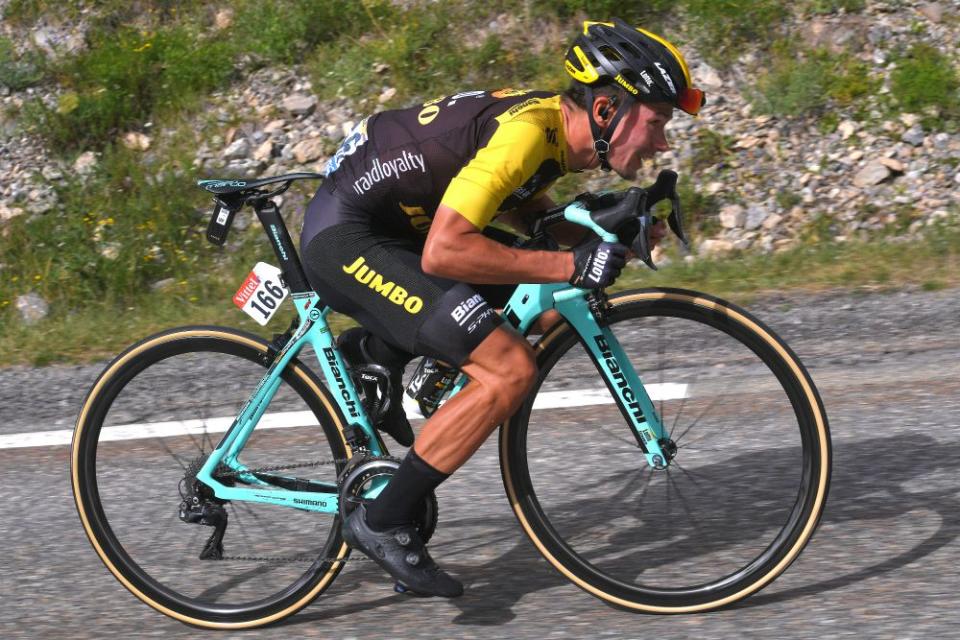How to Beat Chris Froome at the Tour de France

The conventional wisdom about Chris Froome is that he’s not only a talented climber and time trialist, but also relies on a strong team to control races.
That’s true. But Froome’s success comes down to another, less-discussed trait: his tactical adaptability. Over the last two years in particular, he’s shown a kind of creativity and aggression that takes advantage of surprise. Think of his descent on the first mountain stage of the 2016 Tour de France, or his daring long-range move on Stage 19 of this year’s Giro d’Italia.
You can bet that he’s studied the 2018 Tour route in exacting detail-looking at not only the crucial mountain stages, but also the lesser-known spots where he might gain time-and devising a plan to take advantage. Defeating him will take a combination of a strong team with an aggressive mindset that beats him to those opportunities.
BMC is well-suited to support Richie Porte, and the biggest challenge should come from Movistar’s three stars: Nairo Quintana, Mikel Landa, and Alejandro Valverde. But four other teams could also threaten Froome’s run for a fifth Tour de France title. Here’s who they are, and how and where they might do it.
Ag2r-la Mondiale
If Romain Bardet finally stands on the top step of the final podium this year, it’ll be due to his team, which put up a tremendous fight against Froome’s Team Sky last year. Bardet has significant climbing support from riders like Pierre Latour, Mathias Frank, and Alexis Vuillermoz, and muscle on the flats from classics specialists Oliver Naesen and Sylvain Dillier, both of whom will be indispensable in the first week.
Mitchelton-Scott
Adam Yates, who finished fourth in 2016, leads a balanced team with climbers like Mikel Nieve and Damien Howson. But it’s Mitchelton’s strength on flat and transitional stages that makes them most formidable. Mat Hayman, who won Paris-Roubaix in 2016, and two other big bodies in Jack Bauer and Luke Durbridge will provide lots of horsepower.

Astana
Jakob Fuglsang was having a dream Tour last year until a crash injury knocked him out. He’s back in great form with a talented team of veterans like climbers Tanel Kangert and Omar Fraile as well as Amstel Gold Race winner Michael Valgren.
LottoNL-Jumbo
Perhaps the most intriguing team on the list, LottoNL has an underrated two-option General Classification threat in Steven Kruiswijk and Primoz Roglic, and perhaps the race’s most experienced climbing support rider in Robert Gesink. They’ll have to accommodate the ambitions of sprinter Dylan Groenewegen some, but LottoNL is built for the mountains.
Where and How
The key to beating Froome is disrupting his plan, as he’s already marked his spots to gain time. What rivals must do is preempt him and make Team Sky respond to others’ moves. For all its strength, Sky doesn’t always adapt well on the fly. Isolating Froome would equalize the team strength imbalance-and force him to ride a different race than he wants.
Stage 5
All eyes will be on the following day’s uphill finish, but don’t sleep on Stage 5, a classic Brittany day of small, winding roads and endless hills. It makes for nervous racing. Look for Mitchelton-Scott to be aggressive if it’s windy later on, putting its big engines to work to split the pack into echelons. This approach depends on perfect conditions, and Froome has several capable teammates to keep him safe. But if you don’t catch out Sky, you might get one or more of the other GC contenders on the wrong end of things, which allows you to narrow the field.
Stage 10
The Alps provide an almost irresistible one-two shot at Froome, with Stage 10 a day for LottoNL to play its climbing strengths. There will be a large, early break. Put one rider in that, then send Kruiswijk up the road on the day’s third climb (the steep, HC-rated Monteé du plateau des Glières). That forces Froome and Sky to chase, burning out their riders. The pack will regroup in the long valley before the Col de Romme, but that’s where Roglic can launch a long-range move of his own, like the one he used to win the Serre Chevalier stage last year. The approach here is day-long aggression that forces Sky to react and chase for 158K.

Stage 11
Round two, and ideal for Astana. It’s a short stage and the team can be wickedly aggressive here. They key is to apply consistent pressure that blows up the field and prevents things from regrouping. Use Jesper Hansen to set a blistering pace on the first climb-no early breaks. He might get time-cut if this works right, but that’s a necessary loss. Fraile can set the pace on the second climb. Sky will steadily lose riders until Froome has only Bernal and Poels at the start of the final climb, where Kangert can take over and set up Fuglsang for a move when the lead group is down to maybe 10 riders. To really make this work, position lots of team staff at key spots to resupply riders, and make it nearly impossible for Sky to drop back to the team car for fuel.
Stage 17
If none of this works, it’ll come down to Stage 17, a day so short (but hard) that organizers are using an F1-style start grid. At this late point in the race, teams may be decimated by injury and illness. But Ag2r is deep, experienced, and more likely to be at full strength than other squads. Everyone knows what’s coming today, so make it agonizing from the start. Bardet can attack on the first climb and have Vuillermoz, Frank, and Latour cover Froome’s every move behind him. Chase Froome down, make him do all the pacemaking and work in the catch, and attack as many times as you need to get free. Today’s also a day for alliances with other teams, trading attacks in an attempt to crack the leader. It’s plain this year that the other teams have little love for Sky, so we might see this more openly than in the past.
All of these tactics carry major risks. If they don’t work, they could cement Froome even more solidly in the lead. They could even backfire and blow up almost any chance for a rival’s own GC result. But Froome has won four of the last five Tours, and the last three Grand Tours he’s entered. History will remember him as one of the great stage racers of the sport’s modern era. But it will also remember the rider, and team, that finally beat him at his own game.
You Might Also Like

